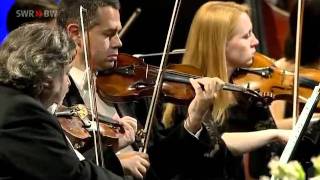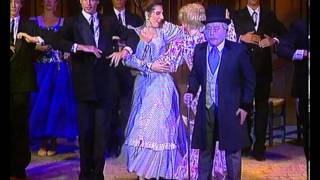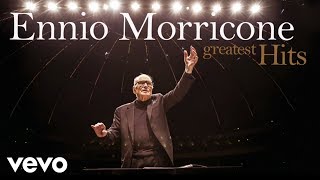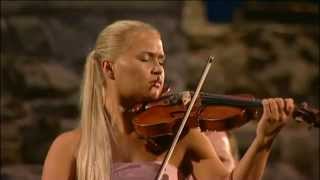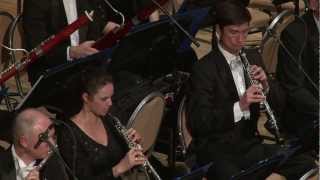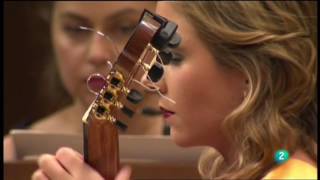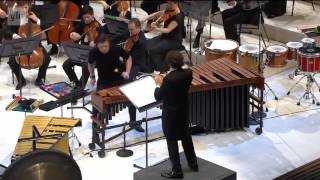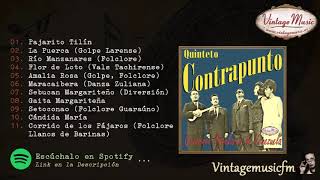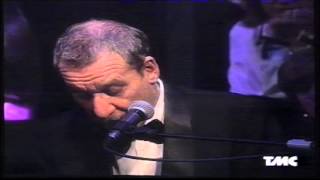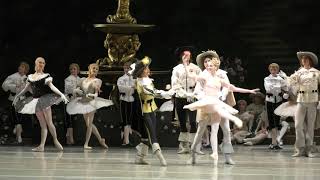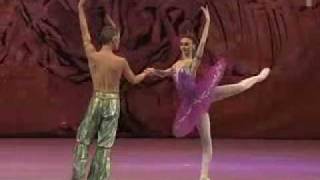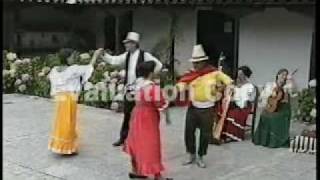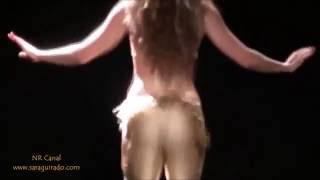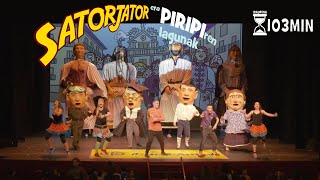On June 21 at 11:44 begins Summer on the Peninsula
Recommended music videos for initiation to classical music
Felix Mendelssohn (1809-1847) was a German pianist, conductor and composer of outstanding technical and formal perfection. Child prodigy who at a very early age showed his extraordinary abilities and brother of the pianist and composer Fanny Mendelssohn , also a child prodigy. He began by receiving piano lessons from his mother; At the age of eighteen, he entered composition classes based on Bach 's Well-Tempered Clavier . In this way, Mendelssohn 's works show a well-established tonal clarity and a deep mastery of counterpoint. His legacy includes piano music, organ music, chamber music, overtures, symphonies, concertos, oratorios, and incidental music.
A Midsummer Night's Dream (A Midsummer Night's Dream) is a musical by Mendelssohn written in 1842 and based on Shakespeare 's (1564-1616) play of the same name. This is incidental music, which includes the famous Wedding March , for a production of the play to which he incorporated the Concert Overture (op.21) that he had written in 1821. The work was commissioned by King Frederick William IV from Prussia and is structured in 12 movements plus a previous overture and a final coda. Today we offer number 1, “ Scherzo ” in a version by the Mariinsky Theater Orchestra conducted by the eminent Russian maestro Valery Gergiev .
Éric Satie (1866-1925) was a French composer and pianist, a forerunner of minimalism and impressionism , and an influential figure in the history of music. He is also considered an important precursor of the theater of the absurd and repetitive music. Reviled by the academy and admired by other composers of his time, he entered the Conservatory at the age of forty. This surprised those who knew him, since until then his training had been irregular and he was dedicated, among other things, to cabaret music . In addition to music, Satie was a thinker with a "great sense of eloquence", who left behind a remarkable body of writing. His best known work is the Gymnopédies , although the catalog of his complete works is made up of more than a hundred works of almost all genres.
" Gymnopédie " was not a word that was used frequently in 19th century France , to the point of being perceived as a neologism by many. However, it had already been mentioned in the Dictionnaire de musique written by Jean-Jacques Rousseau in 1768. Satie chose the term gymnopedia designating a dance practiced by young nude dancers from Sparta . The word could have been chosen in allusion to the notions of asceticism and austerity that refer to everything related to the Spartan civilization, two notions close to Satie 's aesthetics.
The Gymnopédies are three piano works composed by Erik Satie and published in Paris in 1888; they are short pieces that are written in 3/4 time, atypical works that deliberately defy the many rules of classical and contemporary music. The melodies of the pieces use deliberate, though soft, dissonances; in this way they produce a spicy and melancholic effect that fits with the indications of interpretation, such as "painfully", "sadly" or "seriously". Today the Georgian pianist Khatia Buniatishvili offers us Gymnopedia No. 1 on the piano.
Tomás Bretón (1850-1923) was a Spanish composer and violinist born in Salamanca. He completed his first musical studies at the San Eloy School of Nobles and Fine Arts in his hometown. At the age of 16, he moved to Madrid , where he played in zarzuela theater orchestras and continued his apprenticeship at the Royal Conservatory under the teachings of maestro Emilio Arrieta . In 1872 he received, together with Ruperto Chapí , the first prize for composition at the Conservatory . In 1880 he received a scholarship to study abroad, residing in Rome, Milan, Vienna and Paris between 1881 and 1884. In 1901 he assumed the direction of the Madrid Conservatory , a position he held until his retirement in 1921. Prolific composer in many different genres and styles, he also wrote numerous zarzuelas.
La Verbena de la Paloma , subtitled El apoticario y las chulapas y celos mal repressidos , is a lyrical farce in prose with a libretto by Ricardo de la Vega and music by Tomás Bretón , which premiered on February 17, 1894 at the Teatro Apolo de Madrid . Its title refers to the Madrid festivities around August 15, when the procession of the Virgen de la Paloma is celebrated. La Verbena consists of a single act, divided into three scenes, being a prototype zarzuela of the small genre, of short duration. In the work there are characters as endearing and memorable as Don Hilarión , his friend Don Sebastián , Aunt Antonia , the chulapas, the night watchman, the guards, the apothecary and the innkeeper; all of them, very characteristic characters from the old Madrid of the 19th century .
Ennio Morricone (1928-2020) conductor and composer of more than 500 film and television soundtracks, as well as other symphonic and choral compositions. From a musician father, as a child he began to study the trumpet and at the age of nine he entered the National Academy of Santa Cecilia . At the age of 18, he began writing for radio programs and, little by little, for movies. Sergio Leone , a childhood friend, asked him to collaborate in his films and thus they created a different model of western, the Spagetti Western . His contracts were extended with other directors until he became one of the most appreciated soundtrack composers. Throughout his career he received important and innumerable awards endorsing his great work.
Today we present a collection of some of his best-known soundtracks conducted by Morricone himself. I (0:00) The Ecstasy of Gold (The Good, the Bad and the Ugly) .- . II (3:22) The Good, the Bad and the Ugly. -. III (6:04) Once upon a Time in the West .- . IV (9:15) For a Few Dollars More. -. V (13:05) A Fistful of Dynamite .-. VI (17:43) Cinema Paradiso - Main Theme .-. VII (20:13) Chi Mai (Maddalena & Le professionel) .-. VIII (23:48) . La Califfa - The Lady Caliph / The Queen .-. IX (26:27) My Name is Nobody .-. X (29:37) L'arena (Il Mercenario - The Mercenary / A Professional Gun) .-. XI (34:23) A Monument (I Crudeli – The Hellbenders) .-. XII (36:55) Misterioso e Ostinato (Faccia a Faccia - Face to Face) .-. XIII (39:17) Un Amico (Revolver) .-. XIV (41:55) Love Theme for Nata (Cinema Paradiso) .-. XV (46:03) Romanzo (1900 - Novecento) .-. XVI (50:12) Romance Quartiere (Quartiere) .-. XVII (53:51) Il Figlio e la Nostalgia (The Law of the Desert) .-. XVIII (57:41) Ninna Nanna per Adulteri (Cuore di Mamma) .-. XIX (01:00:45) Watch Chimes - Carillon's Theme (For a Few Dollars More) .-. XX (01:01:57) Primo Tradimento (Tepepa) .-. XXI (01:04:13) Run, Man, Run (The Big Gundown)
Recommended classical music videos
Antonio Vivaldi (1678-1741) was an Italian priest, violinist, and composer known as the red priest (“il prete rosso”). He was born in Venice and as a child learned to play the violin from his father; at the age of 15 he entered the Seminary and once ordained a priest, he could barely attend to his religious obligations due to his health problems; so he was appointed violin teacher in an orphanage where he taught theory and instrument classes. At the age of 40, he was appointed Chapel Master in Mantua where he wrote his famous Four Seasons . From there he moved to Milan , then to Rome ; later, again to Venice and finally, to Vienna where he would die. Throughout his life he composed almost 800 works, of which half were concerts, 40 operas, 60 religious works and numerous sonatas.
The Four Seasons are a set of four concerts, one for each season, for solo violin and string orchestra; each concerto is divided into three movements (I Fast, II Slow, III Fast); It is Vivaldi 's most appreciated work and one of the most popular in the History of Music . In his day with the publication of the work, he attached an explanatory brochure in which he described in detail the development and meaning of music, in the manner of what centuries later would be called Programmatic or descriptive Music .
Concerto No. 2, Summer is structured in three movements: I (0´10´´) ALLEGRO NON MOLTO “Under the harsh season lit by the sun, man and herd languish, and the pine burns. The cuckoo lets go of its voice and when they understand it the dove and the goldfinch sing...“ .-. II (6´05´´) ADAGIO E PIANO-PRESTO E FORTE “Steals rest from its lax members, the fear of lightning, and the fierce thunder, and of the flies, and gnats, the furious herd!” .-. III (8´10´´) PRESTO “Ah, what are your true fears! The sky thunders and fulminates and hail, cuts off the heads of the spikes and alters the grains”. Today it is offered to us by the Norwegian violinist Mari Samuelsen .
Piotr Tchaikovsky (1840-1893) was a Russian composer who graduated from the Saint Petersburg Conservatory and wrote works of different genres, although he achieved his greatest success with his ballets. In 1859 he obtained a position as a civil servant in the Ministry of Justice , which he would abandon at the age of three to be able to dedicate himself solely to music. His personal life was plagued by continuous crises since the death of his mother and his repressed homosexuality, which forced him into a marriage that only lasted a few months. He wrote more than 150 compositions, including piano works, quartets, suites, symphonies, concertos, chorales, cantatas, operas, and ballets. He died at the age of 53 and is considered one of the greatest composers in history.
Capricho italiano , is a one-movement orchestral work that includes different Italian melodies that Tchaikovsky had the opportunity to learn about on a trip he made to Rome in 1880. It consists of three uninterrupted sections: ANDANTE UN LITTLE RUBATO (0´4´´) , preceded by a few trumpet calls is the main theme of the work based on a mysterious and deep melody.-. POCHISSIMO PIÙ MOSSO (4'00'') consists of a series of graceful and light Italian melodies that end up linking with the main theme that gives way to ALLEGRO MODERATO (10'10') based on a tarantella with a lively and cheerful air that it will lead to the memory of the main theme to end with a brilliant and enthusiastic ending.
Today's version is offered to us by the Moscow City Symphony under the baton of Russian maestro Michail Jurowski .
Manuel Ponce (1882 - 1948) was a Mexican musician and composer, considered the father of Mexican musical nationalism . He began his piano studies with his sister Josefina . In 1901, he entered the National Conservatory of Music and later in Bologna , Italy , and in Paris with Paul Dukas . On his return to Mexico City, he was appointed director of the National Conservatory of Music and holder of the chair of piano. He composed works for various instruments, especially for the guitar, thanks to the friendship he had with the Spanish guitarist Andrés Segovia , as well as with other composers of this instrument. In 1947 he was awarded the Premio Nacional de Ciencias y Artes , becoming the first musician to receive that distinction. He died in Mexico City a year later.
The Concierto del Sur for guitar and orchestra, is a concertante work written by the Mexican composer Manuel M. Ponce for the Spanish guitarist Andrés Segovia , who premiered it in 1941 with Ponce himself as conductor. The concert has references to Spanish music, references coming above all from the Arab-Andalusian style; reason for which it bears the title of the South in allusion to the south of Spain, Andalusia . The first movement (0´24´´), ALLEGRO MODERATO, begins with a sevillanas-type rhythmic pattern and ends with an extensive cadenza on guitar. The second movement (13'14'') ANDANTE, is a flowery and graceful intermezzo. On the other hand, the third movement (19´19´´) ALLEGRO MODERATO E FESTIVO, is a piece in the form of a dance; a festive Allegro in 3/8 time.
Today it is presented to us by the Cordovan guitarist Mabel Millán accompanied by ORTVE led by maestro Francisco Valero Terribas.
Kalevi Ensio Aho (born Forssa , Finland, March 9, 1949) is a Finnish composer, who studied composition at the Sibelius Academy under Einojuhani Rautavaara , receiving a diploma in 1971 and continuing his studies for a year in Berlin with Boris Blacher . His teaching positions include music theory at the University of Helsinki from 1974–88, and a professorship at the Sibelius Academy from 1988–93. He was appointed composer-in-residence for the Lahti Symphony Orchestra in 1992, and conductor Osmo Vänskä has recorded many of his latest large-scale works. Aho has been working as a freelance composer, on a state grant, since 1993. He currently lives in Helsinki .
Sieidis are cultural elements, usually a rock with an unusual shape, found in nature in certain sacred places, for example in the sea or on river or mountain beaches. Each stone is different from the others, and they can vary in shape and size. most of the sieidis still known today are remembered due to written or oral traditions, but it is likely that other sieidis sites have been forgotten. Many sacrifices took place at the sieidis sites, and these were always connected to the life of the population who used to make offerings and sacrifices to ask the sieidis for help, for example during illness, but also for assistance in daily chores and duties.
Today we offer the concert for percussion and orchestra, Sieidi , written by Kalevi Aho performed by the Austrian percussionist Martin Grubinger accompanied by the Finnish Radio Symphony Orchestra conducted by the Valencian maestro Gustavo Gimeno.
Recommended music videos for all tastes
Norah Jones (New York, 1979) is an American singer, songwriter, pianist and actress. Together with her mother, she lived in New York until she was four years old. So, they moved to Grapevine (Texas), where he stayed until he was twenty. His record debut, went on sale in February 2002, without massive campaigns; despite which, by the fall it had already surpassed one million copies sold. It also went platinum in the Netherlands, Australia, Portugal , and Hong Kong ; double platinum in Great Britain, Ireland, and Singapore ; and five times platinum in New Zealand . Winner of nine Grammy Awards, she has sold more than 40 million records as a singer. Their music combines elements of jazz, blues, soul, country, and pop .
The Contrapunto Quintet , or simply Contrapunto , was a Venezuelan vocal quintet, which achieved national and international fame in the 1960s. It was formed in 1962 and disappeared in 1971 with the death of its founder, director and arranger, the musician from Margarita Rafael Suárez . Within a few months, the group became a national success. By 1962, 50,000 copies of their first album Quinteto Contrapunto Vol. 1 had been sold. His style, unique at the time, fused popular and folk music with the methodology, techniques and treatment of academic music. Although, at that time, the existence of popular and folk music concerts in Venezuela was rare, the group became widely known in Latin America and Europe .
Four sounds, four tambourines, four voices... four women, who are Alaitz Telletxea, Maixa Lizarribar, Amaia Oreja and Kris Solano . A group whose name is made up of the first letter of their own names and who, furthermore, are mothers (“amak”). Four experienced musicians and creators who have trodden a large part of the squares of Euskal Herria waving their trikitixas and tambourines . During the flowering of the trikitixa in the 90s, they conquered the world of the trikitixa , until then very masculine, with their projects. They have become a reference for many. Although they have always been linked to the world of music, after several years off the stage, chance brought them together at the Oñati Trikitixa Festival . After this coincidence they felt satisfied and decided to stay together.
(Extracted from the Amak website https://amaktaldea.eus/biografia/ )
Paolo Conte (1937) is an Italian musician and composer, renowned variety music singer-songwriter. Born in Asti (Piedmont, Italy) he began taking piano lessons as a child, with his brother Giorgio , four years younger. Graduated in Law (which is why he earned the nickname Avvocato ) he approached the world of jazz as a fan of the vibraphone in some groups in Asti . In the 1980s, he published various albums while touring Europe on various tours. Conte 's poetic world shows a messy collage of clichés taken from the cinema, the circus or cabaret, a dreamlike imaginary in a surreal style, mixed with musical airs that rescue sounds from blues , jazz music, tango , African music or South American (rumba and salsa) and a certain experimentalism .
Recommended peculiar videos
The Russian composer Pyotr Tchaikovsky (1840-1893) wrote more than 150 compositions, including works for piano, quartets, suites, symphonies, concertos, chorales, cantatas, operas, and ballets. He died at the age of 53 and is considered one of the greatest composers.
Sleeping Beauty is a fairy tale/ballet in three acts to which the scene we are presenting today belongs, Rose Adagio, which is one of the most challenging moments in classical ballet due to the difficulty of maintaining balance in different moments of the performance. Each of Aurora 's four suitors gives her a rose and with each of them she performs the same steps with which she intends to choose her favorite.
Today's interpretation is given by Lauren Cuthbertson (1984), prima ballerina of the Royal Ballet of London .
Adolphe Adam (1803-1856) was a French composer born in Paris and author of abundant stage music. He was the son of the renowned pianist and professor at the Paris Conservatoire , Lois Adam , with whom he began his musical studies. His first successes reached him as an adult with the ballet Giselle and the opera Si j'étais roi ; by then he had already written several ballets and operas. In total he wrote 40 operas, 14 ballets and various cantatas, hymns, masses, choirs, piano pieces, pantomimes, military marches and plays; Of all these compositions, it is worth noting, in addition to those already mentioned, the ballet Le Corsaire and the worldwide known Christmas carol Cantique de Noël , in its English translation, as O Holy Night .
Pas de deux (in Spanish, paso a dos ) is one that is performed jointly by two people. It usually consists of an entrée (couple's entrance), adagio , two variations (one for each dancer, usually an allegro ), and a coda . It is also known as Grand pas de deux (Great pas de deux).
The Pass de deux that we offer today belonging to the ballet in three acts, Le Corsaire has as protagonists the Ukrainian Svetlana Zajárova (1979) and the Russian Igor Zelensky (1969) considered both as some of the most important dancers of his generation.
The when is a musical style and a native folk dance originating from the Andean and central provinces of Argentina . In 1817, the liberator José de San Martín took this dance to Chile , where it had great development. The Chilean historian José Zapiola says in this regard: “The dance is characterized by alternating a slow and formal stage in minuet rhythm, followed by a light and carefree stage, with the stylistic form of the cat (Argentine dance). It is this second part that gives the dance its characteristic elements and where the man asks the woman: "Oh, when, my life, when?", with an obvious double meaning and loving significance. In this way, the slowness of the minuet works as a prelude for the man, who humorously explodes in the cat , where he asks the disrespectful question... "
Belly dance , Egyptian dance or correctly called oriental dance is the scenic evolution of various traditional ancient dances from the Near East , along with others from North Africa and Greece . The raqs baladi (people's dance) is a very elementary dance, practically without movements and with movements mainly of the pelvis. The evolution of this dance is the modern oriental dance or raqs sharqi , which includes movements from Egyptian folklore, classical and contemporary western dance, with large displacements, turns and movements of all parts of the body, but especially the pelvis. In English-speaking countries it has been translated as belly dance , in Spanish danza del vientre , and in French danse du ventre .
Recommended music videos for children
Various Wikipedia articles have been used to write these texts.
The texts of Videomusicalis are written in Basque, Spanish and English.





